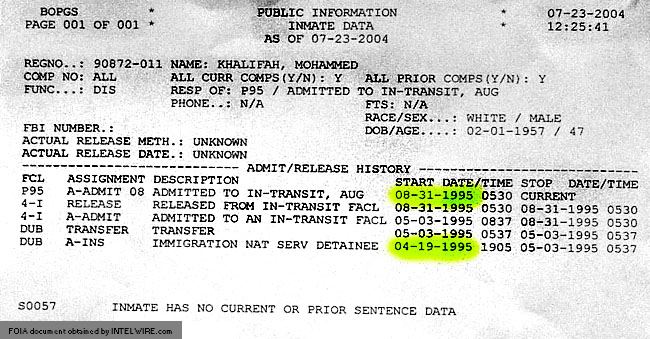|
Mohammed Jamal Khalifa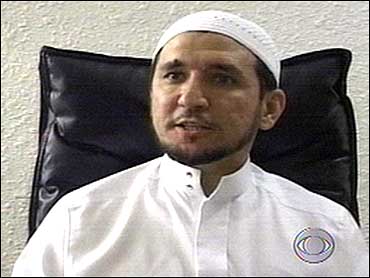 Mohammed Jamal Khalifa wants you to know that he is an innocent man. Mohammed Jamal Khalifa wants to tell you that he has never done anything wrong. Mohammed Jamal Khalifa wants to explain that he has never done anything but try to help people. Mohammed Jamal Khalifa would additionally like for you to know that he really, really disapproves of his brother-in-law, Osama bin Laden.
Mohammed Jamal Khalifa wants you to know that he is an innocent man. Mohammed Jamal Khalifa wants to tell you that he has never done anything wrong. Mohammed Jamal Khalifa wants to explain that he has never done anything but try to help people. Mohammed Jamal Khalifa would additionally like for you to know that he really, really disapproves of his brother-in-law, Osama bin Laden. That's one side of the story. The other side of the story says that Mohammed Jamal Khalifa was once a top al Qaeda lieutenant who helped finance and facilitate the most deadly and devastating terrorist attacks of the last 15 years. Just so we're clear, because no one should ever accuse the Rotten library of being unfair: One side says that Khalifa is a good guy who's been smeared purely on the basis of association. The other side says Khalifa was a huge international terrorist (apparently now retired) with ties to Ramzi Yousef, Khalid Shaikh Mohammed, Hambali, the Bojinka plot (a precursor to the September 11 attack on America), the 1993 World Trade Center bombing, Philippines uber-terror groups Abu Sayyaf and the Moro Islamic Liberation Front, failed attempts to assassinate Bill Clinton and Pope John Paul II, and possibly even the Oklahoma City bombing. Supporting the "smear" side of the story, we have Khalifa himself. And his lawyers. Supporting the "terrorist" side of the story, we have the FBI, the CIA, the U.S. State Department, the U.S. Justice Department, the Philippines government, the New York Times, the Washington Post, the San Francisco Chronicle, the Chicago Tribune, the Wall Street Journal, the Christian Science Monitor, the New Yorker, the Atlantic Monthly, Time, Newsweek, CNN, CBS News, and every leading terrorism author in the country, including but not limited to Steve Emerson, Simon Reeves, Rohan Gunaratna, Peter Bergen, Michael Scheuer, Maria Ressa, Richard Clarke and Yossef Bodansky. The American way of resolving such questions of guilt and innocence is through a trial, but Khalifa has never been tried in the United States — even though he was arrested and detained here for six months beginning in 1994. And therein lies a story.
In the late 1980s and early 1990s, Khalifa ran a variety of charitable organizations which the U.S. and other governments now claim were fronts for funneling money from al Qaeda to various terrorist groups around the globe, but particularly in the Philippines, where he moved around 1988. Most sources agree he was sent by Osama bin Laden to help strengthen the newly formed Abu Sayyaf Group, an Islamic insurgency based in the southern part of the country. When he arrived in Manila, Khalifa set up several businesses and charities around the country. Philippines authorities believe pretty much all of these organizations were shells to support the work of al Qaeda. The list includes the International Islamic Relief Organization, Benevolence International Corp., Khalifa Trading Industries and several others. Each organization had an exterior function, such as charity work and "import-export" (a term traditionally used to cover all manner of sins). Each also had a covert function, which was to provide logistical and financial support to al Qaeda-supported terrorist activities. Khalifa came to the attention of U.S. authorities early. In September of 1992, star terrorist Ramzi Yousef and relative unknown Ahmed Ajaj flew into the U.S. with the intention of making a big bang. They were stopped by customs at the airport. A search of Ajaj's luggage revealed that he had packed some light reading -- several bomb-making manuals. Despite the fact that they were traveling together, Yousef was released (in one of the biggest blunders in law enforcement history), while Ajaj was arrested. Some of the bomb manuals were marked with the name Abu Barra, an alias the FBI says was used by Khalifa.
Khalifa was establishing a reputation in the Philippines as well. After marrying a local woman, he traveled in and out of the country frequently on various "business" excursions. He moved money to the Abu Sayyaf Group in the south of the country to pay for training and supplies, according to authorities there. Then things moved up a notch. Fresh off his success in New York City, Yousef had been freelancing in Pakistan, where he had a few hits and misses with various plots and schemes. In the fall of 1994, Yousef and a team of expert terrorists (including future 9/11 mastermind Khalid Shaikh) moved to Manila and set up operations.
The plan, code name Bojinka, had several phases, including plans to assassinate the pope and President Clinton during visits to Manila, and an ambitious plot to blow up a dozen airliners simultaneously over the Pacific within an approximate 48-hour time span. In November of 1994, the conspirators were in frequent telephone contact with Khalifa's cell phone. The Saudi businessman was preparing for a trip to San Francisco which began on Dec. 1 and ended unceremoniously on Dec. 16, when he was arrested by the INS after having his visa revoked. That's when things really start to get convoluted. When Khalifa was arrested, he was in the company of two individuals:
The INS and then the FBI tossed through Khalifa's luggage and discovered manuals in Arabic on training terrorists, covering subjects such as bomb-making and other forms of creative violence in the name of Islamic fundamentalism. Khalifa claimed that his possession of these materials was entirely innocent. There was also a personal organizer, with Khalifa's phone contacts listed. One phone number was for Wali Khan Amin Shah, a member of Yousef's gang in Manila, who was busy helping get the bomb plot together at that exact moment. (Khalifa was preparing to fly to the Philippines when arrested.) There was a listing for a cellular phone belonging to an unidentified associate of Khan and Yousef (based on the hedging in the FBI statement, which suggests they don't want to discuss why they never arrested this "associate," this was very possibly Khalid Shaikh Mohammed). And there was another number, one for Osama bin Laden himself.
What happened indeed! You can keep on asking that question, but you're not going to like the answers, assuming you get any. Khalifa was moved to solitary confinement. The contents of his luggage were logged and noted. You're probably thinking that an international team of FBI agents and Philippines police came swarming down on Ramzi Yousef and his cronies. OK, of course you're not thinking that, because that would make sense, and when did the world ever do that? Khalifa cooled his heels in solitary confinement while a team of San Francisco lawyers dug into his case, and Yousef kept on making bombs until early January, when he was exposed... not by the FBI, not by the police, not by the CIA... but by an accidental fire, or so the official story goes. When chemicals in his Manila apartment caught fire, a beat policewoman came to investigate the giant plume of smoke billowing from the window. In fact, the Philippines police -- armed with copies of the documents seized from Khalifa's luggage -- had been closing in on Yousef for a few days. Some reports have claimed that the "fire" was staged by police as a pretext for entering. Whatever the case, the police did actually go into the apartment and found many bombs, falsified documents and plans to blow up a dozen U.S. bound airliners over the Pacific Ocean, a plot which was scheduled to take place just over two weeks from the date of the raid. When the smoke cleared, between the Philippines police and the FBI, investigators had found business cards for Khalifa in the possession of Yousef and one of his subordinates, five phone numbers for Khalifa on one of the Manila terrorists, contact information for Khalifa on Yousef's computer, phone calls from the terrorists to Khalifa just before his arrest and evidence that Khalifa's charity had been funding the Manila operation. Khalifa's name was found on the lease of one of the two apartments used by the cell. By now, you've probably got the swing of this article, so it will come as no surprise to you that the U.S. government's next move was to deport Khalifa. The Saudi had been tried in absentia and convicted of terrorism charges in Jordan, related to a couple of theater bombings there. Yes, a couple theater bombings trumped the World Trade Center bombing, Ramzi Yousef and the plot to blow up a dozen airliners. The government of Jordan asked for him to be extradited. In January, Secretary of State Warren Christopher set the wheels in motion with a letter to the Justice Department requesting that Khalifa be deported.
The next time you get busted with a bag of pot in your glove compartment, try suing the government to have it returned, and see how far it gets you. Khalifa, however, won by default when the U.S. Attorney shockingly announced it had "no objection" to returning the terrorism manuals and terrorist rolodex to the Saudi. The conviction in Jordan was overturned as per standard procedure in absentia proceedings, and a new trial was ordered. But as of April 18, 1995, Khalifa was still fighting the deportation. Then, on April 19, the Murrah Federal Building in Oklahoma City was bombed to death. Around midday April 19, a known associate of both Khalifa and Yousef told the FBI that Yousef was responsible. And just a few hours after THAT, Khalifa was moved from the county jail holding cell that had been his home for months into a maximum security federal prison in Dublin, Calif. On his very next court date, April 26, Khalifa told the judge that he'd had a sudden change of heart and thought it would be a great idea if he was deported to Jordan to face a new trial and possible death sentence. You can draw your own conclusion about that sequence of events; the possible involvement of Yousef in Oklahoma City is best left for consideration elsewhere. The simple facts of the matter are bad enough without complicating them with speculation. The U.S. government claims this guy was tied the 1993 World Trade Center bombing, to Ramzi Yousef (this was no secret either, newspapers at the time reported the fact), and to the blind Shaikh, who was on trial at the time. All that, plus he was potentially implicated in Oklahoma City (and there's no way that allegation could have been reasonably disproven SEVEN DAYS after the bombing). All this, and the U.S. government collectively says, "See ya later." And gives him back his belongings (aka "evidence"). Oh, and the INS also agreed to strike the terrorism charges from his record. By May 5, he was out of the country and on his way to Jordan... ...where he was acquitted of terrorism charges, and walked away a free man.
Two BOP officials confirmed that the record clearly indicates Khalifa remained in U.S. custody until August 31, 1995. Neither would reveal which government agency took custody of him. Both confirmed that the final notation on the record -- dated Aug. 31 -- was consistent with Khalifa's transfer to a foreign government. Numerous follow-up Freedom of Information Act requests for explanation of the codes used on the form were declined or evaded without explanation, and no explanations appear to be forthcoming from any other government agency any time soon either. Interestingly, Khalifa remained in U.S. custody throughout the entire trial in Jordan and apparently right up until he was escorted home to Saudi Arabia, where -- according to former CIA bin Laden hunter Michael Scheuer -- "Saudi officials greeted him at the airport." Today, Khalifa lives freely in Jeddah, Saudi Arabia, although he was briefly detained after 9/11. He has become something of a terrorist celebrity, a favorite interview for terrorism writers, whom he regales with stories of how he used to constantly urge Osama not to be a terrorist. By most accounts, Khalifa appears to have distanced himself from bin Laden and publicly condemned him after 9/11. But still, if Charles Manson distanced himself from the Manson family and publicly condemned their killings, would John Ashcroft just say, "Hey, all right then, we don't want you any more!"? There are other, darker questions. Khalifa's phone book pointed directly to Ramzi Yousef's Manila terrorist cell -- a cell which was apprehended due to this apparent stroke of fate, this accidental fire, a happy chance which led to the arrest of Ramzi Yousef -- but not of Khalid Shaikh Mohammed. When the trial began several months later, Khalifa was glancingly referenced, but not by his full name. Khalid Shaikh was also strikingly absent from the prosecution's case -- the subject of a secret indictment, which was kept secret for reasons never disclosed to the public. In part because of the notable lack of international manhunt for Khalid Shaikh, the terrorist mastermind was free to move on to bigger and better things -- like planning and executing September 11. Somebody in the U.S. government presumably knows just what the hell was going on with this case. However, those somebodies -- whomever they may be -- aren't talking. But then anyone who has lived in America for any appreciable length of time has already become accustomed to the bliss that accompanies ignorance. It must fall under "pursuit of happiness."
|
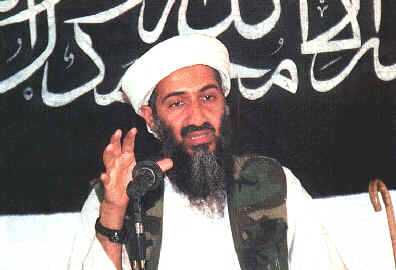 Khalifa was a wealthy Saudi businessman whose association with bin Laden goes back to the late 1970s. Khalifa and bin Laden were roommates and best friends during the jihad in Afghanistan. They hit it off so famously that bin Laden suggested Khalifa marry one of his sisters, an offer Khalifa accepted.
Khalifa was a wealthy Saudi businessman whose association with bin Laden goes back to the late 1970s. Khalifa and bin Laden were roommates and best friends during the jihad in Afghanistan. They hit it off so famously that bin Laden suggested Khalifa marry one of his sisters, an offer Khalifa accepted. 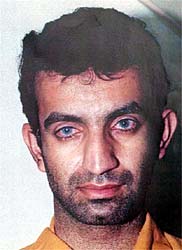 A year later, one of Khalifa's business cards was found among the belongings of the "blind Sheikh," Omar Abdel Rahman, whose band of followers in New York City helped execute the World Trade Center bombing and nearly brought about a "Day of Terror" in which truck bombs would have been deployed to destroy New York City landmarks.
A year later, one of Khalifa's business cards was found among the belongings of the "blind Sheikh," Omar Abdel Rahman, whose band of followers in New York City helped execute the World Trade Center bombing and nearly brought about a "Day of Terror" in which truck bombs would have been deployed to destroy New York City landmarks. 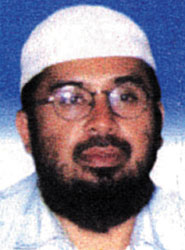 The funding came from bin Laden and very probably from other wealthy and influential Saudi patrons. (The Saudi royal family, including U.S. ambassador Prince Bandar, are on the historical list of major IIRO donors, although they deny knowingly supporting terrorism.) The money was funneled through fronts operated by Khalifa (including IIRO) and Malaysian terror kingpin Hambali (including a company called Konsojaya).
The funding came from bin Laden and very probably from other wealthy and influential Saudi patrons. (The Saudi royal family, including U.S. ambassador Prince Bandar, are on the historical list of major IIRO donors, although they deny knowingly supporting terrorism.) The money was funneled through fronts operated by Khalifa (including IIRO) and Malaysian terror kingpin Hambali (including a company called Konsojaya). 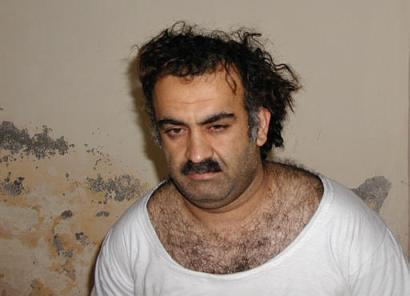 You're probably thinking to yourself, "Wow! With all these leads in hand, the government could have unraveled half of al Qaeda right there! What happened?"
You're probably thinking to yourself, "Wow! With all these leads in hand, the government could have unraveled half of al Qaeda right there! What happened?" 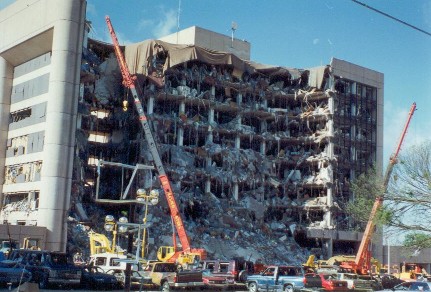 A flurry of legal activity followed. Khalifa fought the deportation in court, first with an unsuccessful bid to be released on bail, then in immigration court. Separately, he sued the government in civil court for the return of his belongings, or what we might think of in layman's terms as "evidence."
A flurry of legal activity followed. Khalifa fought the deportation in court, first with an unsuccessful bid to be released on bail, then in immigration court. Separately, he sued the government in civil court for the return of his belongings, or what we might think of in layman's terms as "evidence." 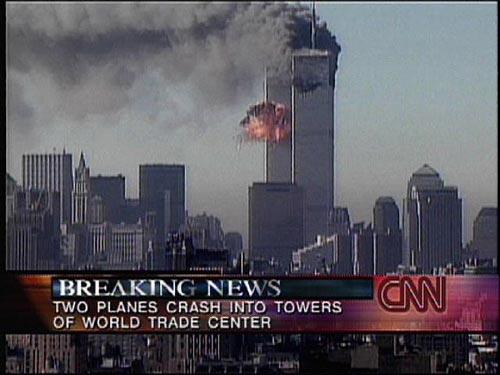 Except it's not that simple. A Bureau of Prisons record obtained through the Freedom of Information Act reveals that Khalifa didn't take a non-stop flight to Jordan. Instead, he was transferred to everyone's favorite terrorist destination -- "other government agency."
Except it's not that simple. A Bureau of Prisons record obtained through the Freedom of Information Act reveals that Khalifa didn't take a non-stop flight to Jordan. Instead, he was transferred to everyone's favorite terrorist destination -- "other government agency." 